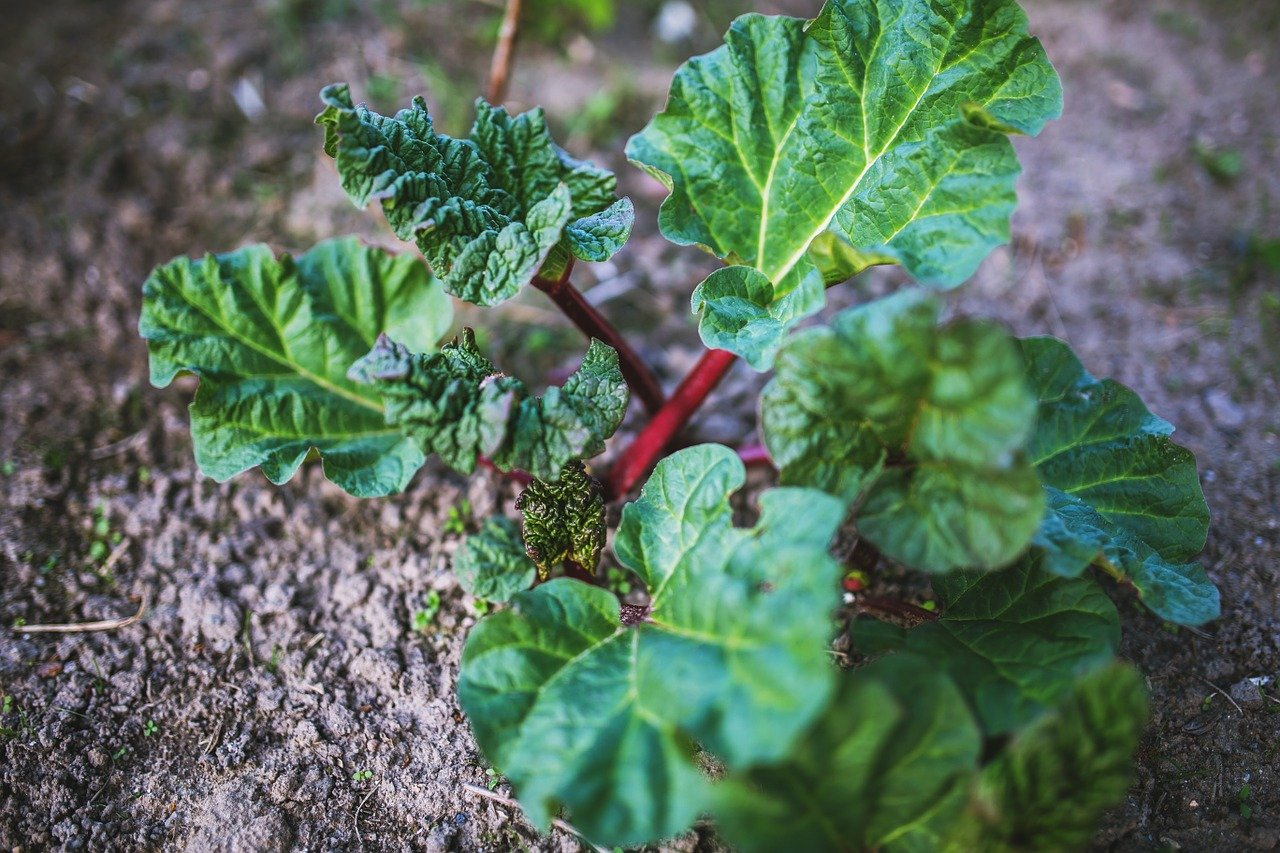
How to Propagate & Harvest Rhubarb
Rhubarb is a perennial shrub that is harvested in spring and is very popular with many people. Its fruity tartness is particularly popular in cakes and compotes. You can find out how to grow rhubarb and tips on planting, sowing, propagating, caring for and harvesting it here.
This Article Contains:
- Origin of the Rhubarb Plant
- The Right Location
- Sowing or Planting Rhubarb?
- Propagating Rhubarb and Obtaining Seeds
- Rhubarb Varieties: Green and Red Rhubarb
- Fertilize & Care for Rhubarb
- Planting Rhubarb: Companion Plants & Crop Rotation
- Your Planting Plan With Rhubarb
- Rhubarb: Harvest Time
- Processing Rhubarb: Tips
- Rhubarb: Diseases and Pests
- Frequently asked questions about planting rhubarb
Quick Overview
Propagatind and Harvesting Rhubarb: Tips for a Successful Cultivation
- Location: Rhubarb is a heavy feeder and needs humus-rich and well-fertilized soil. Choose a semi-shady location.
- Sowing rhubarb:
- Time: end of February to beginning of April
- Sowing depth: 1 to 2 cm/0.4 to 0.8 in as a dark germinator
- Germination temperature: 12 to 15 ° C/54 to 59 ° F
- Germination time: 6 to 20 days
- Rhubarb is propagated by root division.
- When to plant rhubarb? Best in spring between March and April or in fall between September and October.
- Note: It is a permanent crop that can remain in one place for at least 7 years.
- When to harvest rhubard? Rhubarb can be harvested from the 2nd year from the beginning of May to July 21; only the leaf stalks are harvested, which can be peeled and processed.
Origin of the Rhubarb Plant
Rhubarb (Rheum barbarum) originally comes from Asia, from where it reached Europe via the Caucasus. The knotweed got its name from the Romans, who found rhubarb mainly in Russia, which they called the land of the barbarians. The large, sour stems of the perennial were of no use to them, which is why they contemptuously called the plant "barbarian root". Later, however, the Romans also recognized that rhubarb cooked with sugar was ideal for desserts. It should not be eaten raw due to its relatively high oxalic acid content, as this can damage the kidneys.
The Right Location
As already mentioned, rhubarb is a perennial plant. Once planted, the vine can remain in one place for around 7 years. The plant grows there from year to year and, if it is happy, produces increasing harvests every year. The original rhubarb plant occurred naturally in moist and nutrient-rich alluvial soils. This means that rhubarb is a heavy feeder and should be given as humus-rich and well-fertilized a site as possible. Consistent moisture is also important for rhubarb. However, waterlogging must be avoided, especially in winter. However, it also thrives very well in sandy soil that dries out easily. The plant copes well with both full sun and partial shade. However, locations that are too shady should be avoided, as the stems will only grow very thin here.
Sowing or Planting Rhubarb?
You can sow rhubarb seeds or plant a small rhubarb plant directly. The latter is usually done by dividing and propagating the rhubarb plant.
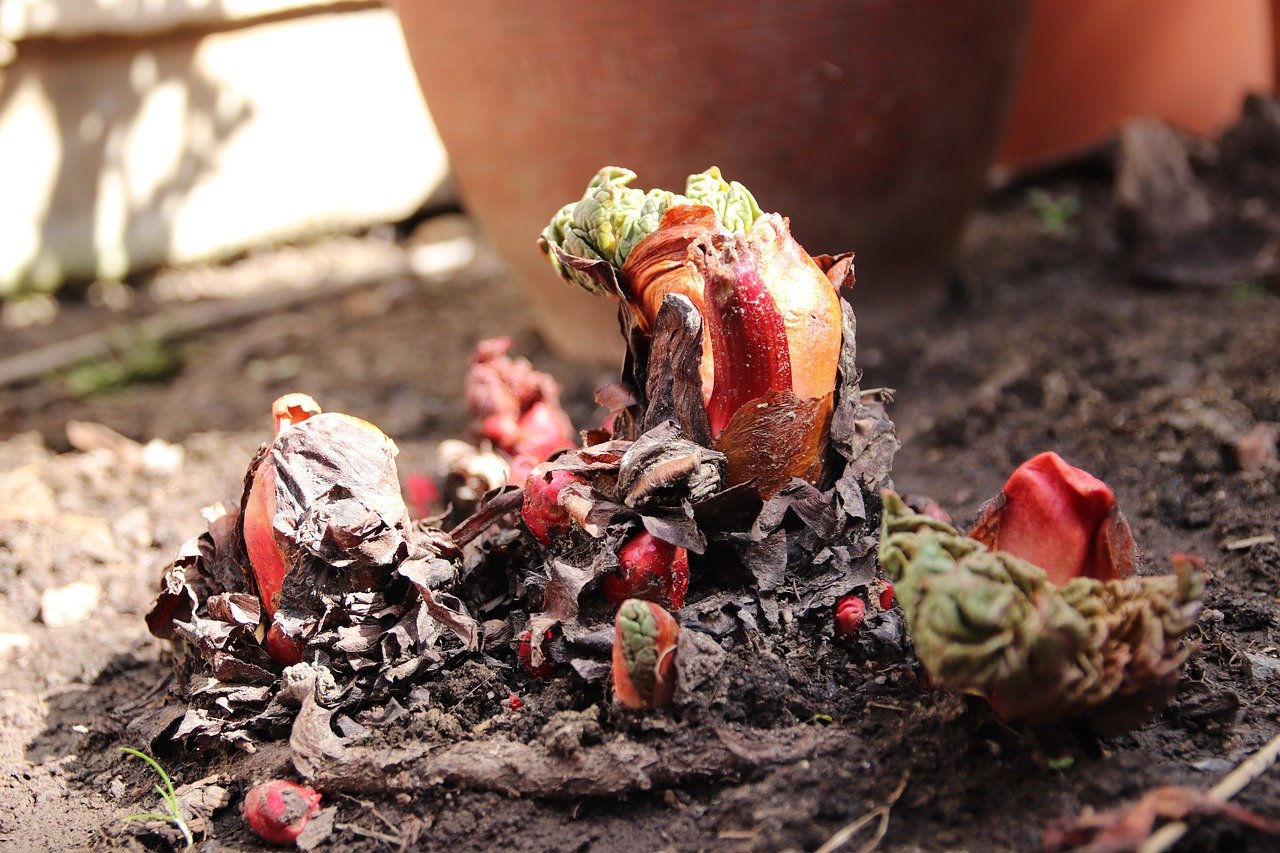
Sowing Rhubarb: How It Works
For sowing, you should choose a sheltered place such as a greenhouse or windowsill, as the young plants are very popular with snails. Rhubarb can be sown between the end of February and the beginning of April. As a dark germinator, it is sown 1 to 2 cm/0.4 to 0.8 in deep. To increase germination, you can carefully roughen the seeds with sandpaper and soak them in lukewarm water or chamomile tea for 6 to 12 hours. Do not choose pots that are too small, as the young plants want to develop strong roots relatively early. Temperatures between 12 °C and 15 °C/54 and 59 ° F are required for the seeds to germinate. Germination should take place after 6 to 10 days. As soon as the space in the pot becomes too small, you should plant out the young plants.
When and How to Plant Rhubarb?
It is best to plant the perennial either in the fall (September/October) or early spring (March). You should plan at least one square meter for the future perennial. Dig the soil deeply and, if you have sandy soil, work in some humus to increase the water retention capacity. You should also fertilize your rhubarb organically, for example by adding mature compost or horn shavings (max. 3 handfuls) to the planting hole. Finally, press the plant down a little and spread some (bark) mulch around the young plant. The rhubarb should end up so deep in the planting hole that the main eye is still just above the soil surface.
Propagating Rhubarb and Obtaining Seeds
With rhubarb, it is a good idea to obtain new plants by dividing the rootstock. Seeds obtained from the inflorescences of the plant or from specialist retailers require a much longer waiting period after planting until the first harvest.
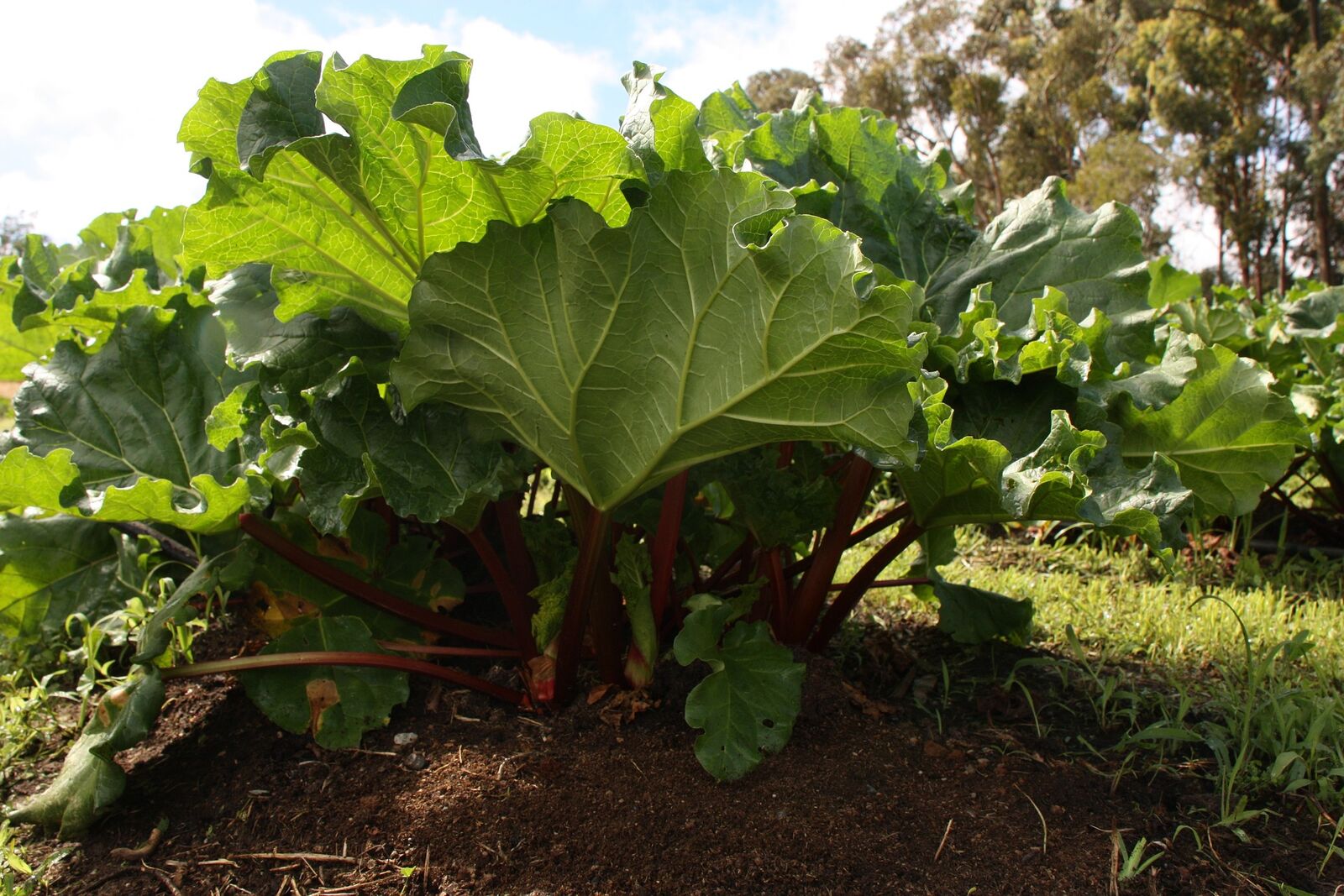
Propagating Rhubarb
Rhubarb is a long-lived perennial and permanent crop. This means that it dies above ground every year in the fall and then sprouts anew in the spring. Other perennials of this type include asparagus, Jerusalem artichoke and artichoke. If you want to propagate rhubarb, you can do so from an older rootstock. The best time for this is either late winter or early spring. The soil should not be too wet and there should be no frost in sight at first. New plants from cuttings of the old plant produce high yields much faster than growing from seed. To do this, after approx. 7 years, the rootstock is slightly exposed at the side and divided using a sharp spade. You can also rejuvenate your rhubarb plant earlier as soon as the yield decreases. Rhubarb should not be propagated before the third or fourth year of the original plant. Make sure to separate an approximately fist-sized piece with at least 2 leaf bases from the remaining rhizome. A healthy rhizome is the basis for a healthy new rhubarb plant, so do not take any diseased or weak shoots. The outer parts of the cane are better suited than the inner parts because they are less woody. You can replant this cutting directly in a new location, but don't wait too long, otherwise the roots will dry out.
Obtaining Rhubarb Seeds
You can collect seeds from the inflorescences of your rhubarb plants. Leave the seeds to ripen on the inflorescence until late summer and harvest the seeds. The rhubarb can be sown between the end of February and the beginning of April. You can do this either on the windowsill or in a greenhouse.
Rhubarb Varieties: Green and Red Rhubarb
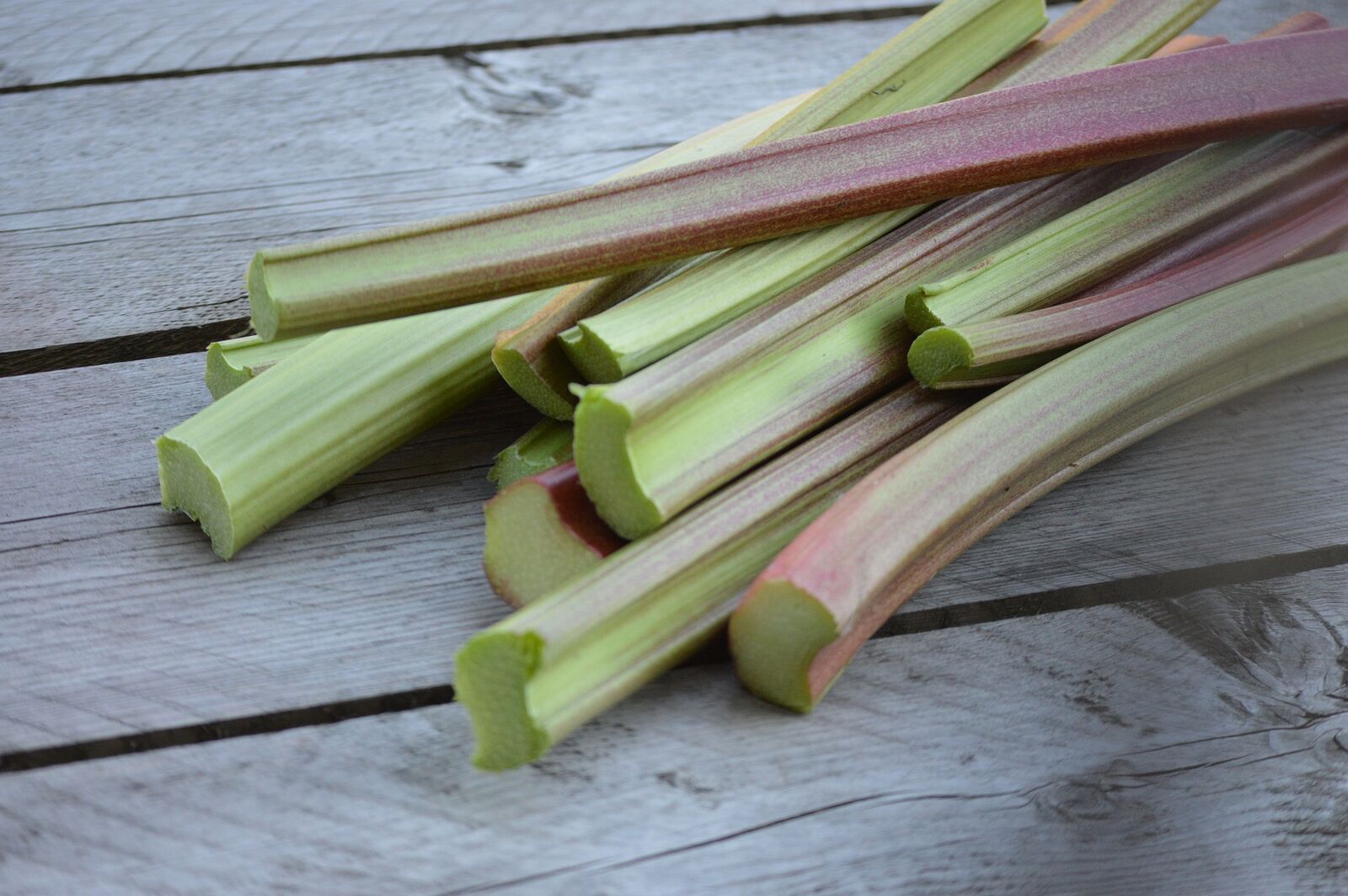
Green and red rhubarb differ in the color of the flesh. The stalks of all varieties grow up to 50 cm/19.7 in long. Red rhubarb tastes somewhat milder than green rhubarb, but also yields less. 'Raspberry rhubarb' is red inside and out, but is not reliably hardy. A red variety is, for example, 'Rambozen Rood' and a green-stemmed 'Gigant'.

Discover Numerous Rhubarb Varieties!
In our lexicon you will find information on the individual rhubarb varieties with cultivation periods, planting and harvesting tips. You will also find good and bad neighbors to help you plan a mixed crop.
View Lexicon NowFertilize & Care for Rhubarb
The rhubarb plant withdraws into its underground roots in winter and sprouts anew in spring. Nevertheless, it is a heavy feeder and therefore needs a lot of nutrients, especially during the growth and harvest phase from May to June. This way, your rhubarb plant will produce higher yields.
It is therefore best to fertilize the plant every year in March by working horn shavings or mature compost into the top layers of soil around the plant. You can also fertilize the rhubarb again after the harvest in June. An even water supply is also very important, especially in dry weather.
Remove Rhubarb Flowers?
After an appropriately long vernalization stimulus (cold stimulus over a certain period of time), the plant begins to produce flowers. You should break these out as early as possible, because flower formation costs the plant a lot of energy. It cannot then put this energy into the formation of the leaf stalks, which you want to harvest later. Theoretically, you can also eat the flowers or extract seeds from them later.
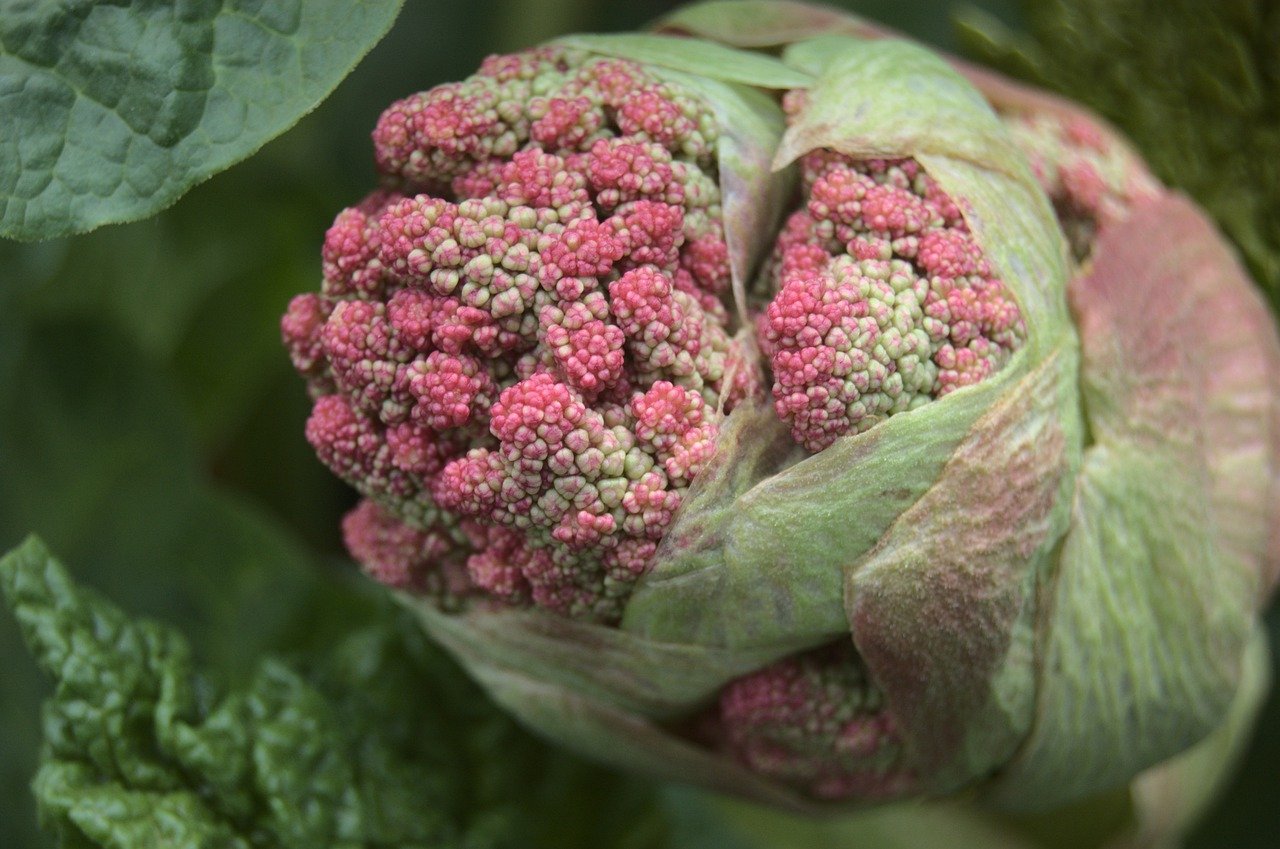
Preparing the Rhubarb Plant for Winter
In the fall, you can cover your rhubarb plant with rotted manure or straw to protect it during the winter. The thick roots serve as storage organs and allow your rhubarb plant to sprout again in spring. From October, the leaves of the shrub turn yellow and the plant begins to withdraw. As the leaves are not edible, you can use them as mulch or remove the dead leaves in the fall.
Planting Rhubarb: Companion Plants & Crop Rotation
| Good Companion Plants | Bad Companion Plants | |
|---|---|---|
| bean | kohlrabi | lovage |
| broccoli & brussels sprout | lettuce | topinambur |
| cabbage | napa cabbage | |
| cauliflower | pak Choi | |
| collard greens | pea | |
| common marigold | spinach |
Rhubarb should not be cultivated directly next to other plants, as it can take up a lot of space over time. After about 7 years, you should dig up your rhubarb, divide it and move it to another location to give the soil a break. In the interests of crop rotation, you should not grow rhubarb in the original location for 3 to 5 years.
Your Planting Plan With Rhubarb
Here you will find inspiration for your planting plan with rhubarb in mixed cultivation.
Rhubarb: Harvest Time
Rhubarb should be harvested from the second year after planting/sowing at the earliest. Before then, it is particularly important that the young plant can grow sufficiently and develop undisturbed. Depending on the region, you can start harvesting from early to mid-May. The best way to do this is to do without a knife and twist the stems from the base of the plant with a little pressure. Cutting will cause the remaining stems to die off and can lead to rotting of the rootstock. It is better to harvest a little at a time rather than all at once, as this will allow your rhubarb plant to recover better.
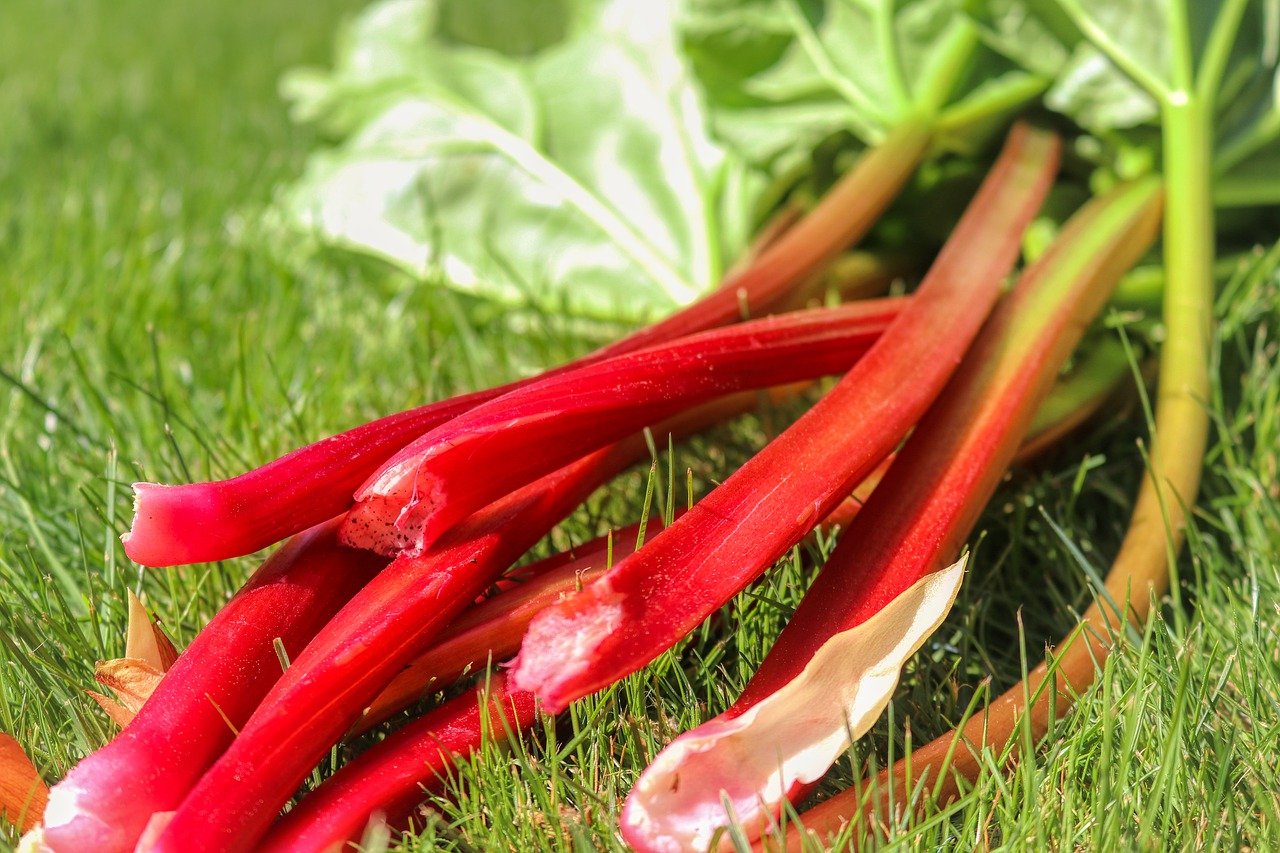
How Long Can You Harvest Rhubarb?
The rhubarb harvest season traditionally lasts until June 21. After this date, rhubarb should no longer be eaten, as the oxalic acid content of the stalks is otherwise too high. By then, you should only have harvested at most half of the stalk so as not to weaken the plant too much. The rhubarb needs the remaining leaves in order to carry out sufficient photosynthesis. This produces important sugars, which remain stored in the roots over the winter. Only when enough sugars have been produced can the rhubarb sprout vigorously again next spring.
Processing Rhubarb: Tips
Only the green to reddish leaf stalks of the rhubarb are used and harvested. They contain potassium, phosphorus, iron, vitamin C, but also oxalic acid. Because of the latter, rhubarb should not be eaten every day. The leaves have an even higher oxalic acid content and are therefore not suitable for eating either raw or cooked. Even though rhubarb is a stalk vegetable, it is usually used in sweet dishes such as cakes and compotes. This means you can turn the harvest from your garden into a delicious dessert and don't have to wait so long for the fruit to ripen. You should peel the rhubarb before processing it, as the skin also contains more oxalic acid and sometimes has a woody consistency.
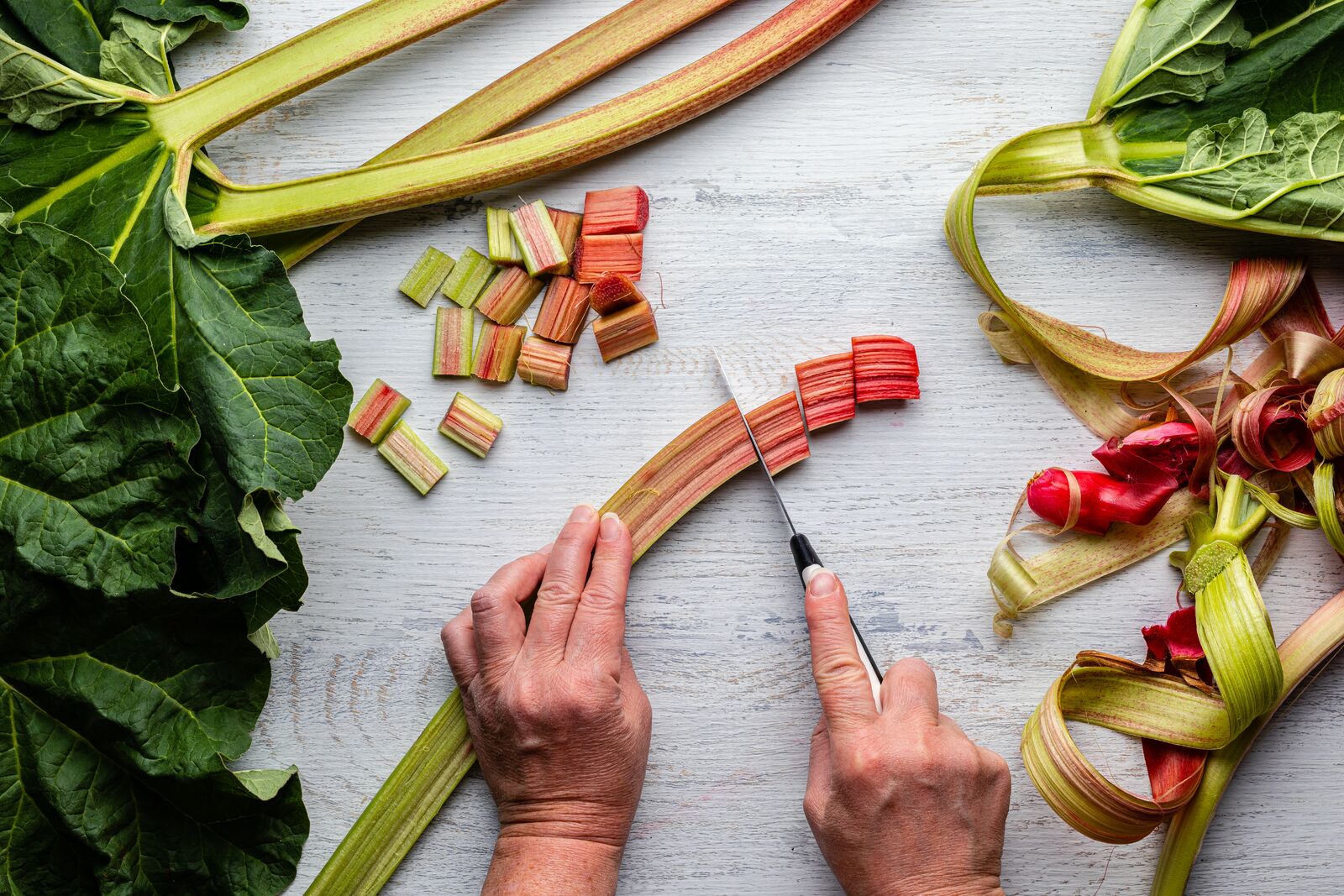
Rhubarb: Diseases and Pests
Especially with perennial plants such as rhubarb, it is important to regularly check the plant for diseases and pests. The perennial is very robust and is only attacked by leaf spot fungi in very wet years. This causes a brown center with yellow or red edges to appear on the leaves later on. The leaves should be generously removed and disposed of (not in the compost!). In rare cases, mosaic virus disease can occur on the leaves, whereby the leaves turn brownish and curl slightly. Yellowish, mosaic-like discolorations, especially in spring, are also typical symptoms. In this case, the entire plant, including the rootstock, should be destroyed to prevent further transmission through aphids or division. Only preventative measures such as buying certified seed and regular aphid checks can help against the virus. Root rot and slugs can also become a problem. However, before you combat diseases and pests on your plant and take measures, you should always be sure exactly what the problem is.
I hope I've whetted your appetite for growing rhubarb. If you have any questions or comments, please write to us at magazin@fryd.app.
Want to get helpful gardening tips all year round and plan your own beds in the best possible way? Then register here or download the Fryd app for Android or iOS.
Fryd - Your digital bed planner
Cover picture by Karolina Grabowska on Pixabay
Isabell
Current Topics in the Community

#red , #tuesday

Liked 1 times
#testpostcount

Dec 2025
Popular Articles

Companion Plants for Carrots: What (Not) to Plant With Carrots

Companion Plants for Celery : What (Not) to Plant With Celery?

Strawberry Types: List of Best Strawberry Varieties

Companion Planting With Strawberries: Companion Plants and Planting Plan

Basil Varieties & Types at a Glance

What to Plant With Cabbage: Good and Bad Companion Plants

Fertilizing Strawberries: Home Remedies & Natural Fertilizers at a Glance

Growing Sweet Potatoes: Tips on Cultivation & Companion Plants

Companion Plants for Kitchen Herbs: Chives, Parsley & Co

What Herbs Can Be Planted Together?
FAQ
You can either sow rhubarb seeds or plant rhubarb seedlings. Seedlings are usually planted as they allow you to harvest faster. These seedlings are usually obtained by dividing the roots of the mother plant.
You can grow rhubarb yourself, but it can also be sown directly or planted as a seedling without any problems. However, if you want to give your rhubarb a head start, you can preplant it between February and March.
This is best done in spring between March and April or in fall between September and October. The freshly planted plant benefits from the rising temperatures in spring. Do not plant too late in the fall so that the seedling can take root well.
Rhubarb is usually propagated by root division instead of seed production. With a seed, the plant needs more time to grow. You can harvest faster with seedlings.